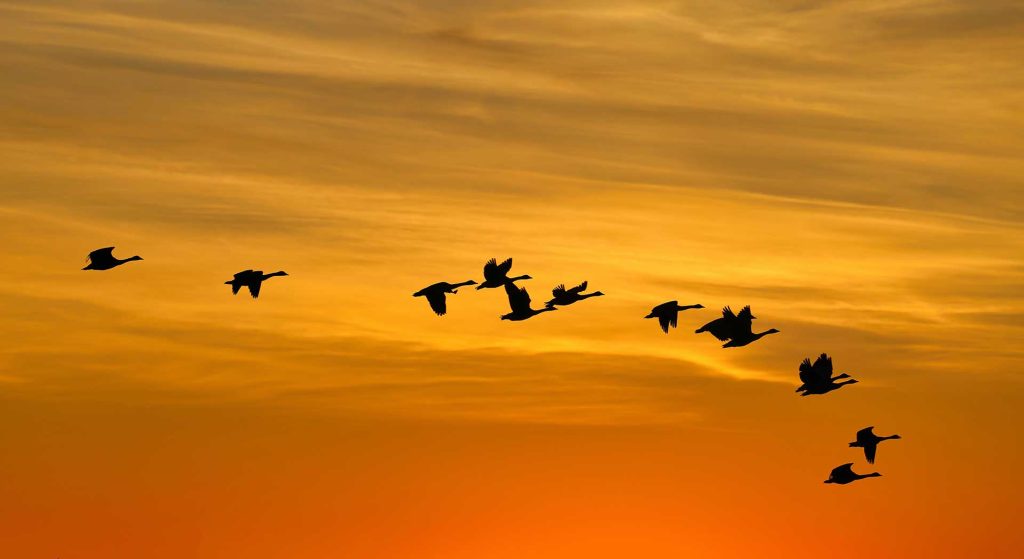Nature’s Autumn
Wrap up warm and head out to your local park where you can discover a world of nature’s magic
Migrating birds
Before you start looking to the ground, cast your eyes to the sky.
Autumn is when many birds form flocks – from parties of long-tailed tits to huge flocks of waders on coastal estuaries and murmurations of starlings. Look for flocks of jackdaws, rooks and carrion crows flying to woodland roosts on Autumn evenings. If you live near the coast, look for great skeins of migratory geese which arrive from Arctic breeding grounds to spend the winter with us.

Blackberries
You know it’s Autumn when blackberries gleam in the hedgerows.
Pick the berries that are dark in colour, almost black. If you pick them too early, they will be red and bitter. Put your forefinger and thumb just behind the berry and gently pull towards you. If it easily pops off then it is ripe. It should leave the white end of the stem behind.

Be careful approaching these bushes as they are covered in thorns and you could get hurt!
Squirrels
The popular grey squirrel is most active at dawn and dusk, searching for available food. Rhiwbina has become synonymous with grey squirrels due to the high population.

During Winter, the grey squirrel does not hibernate as it cannot store enough energy to survive for long periods without food. To survive the lean cold months of Winter, a large, thick winter drey is built, usually on a strong branch close to the trunk of a tree. The squirrel will lie up in the drey in very cold weather, coming out now and then to search out hidden stores of nuts buried in the ground in Autumn.
The stored nuts are spread around rather than in a single cache and are found by smell, rather than memory. Often they are not found at all and later may grow, helping the dispersal of trees. Winter dreys are often shared for warmth. As it sleeps, the squirrel curls its tail around its body to act as a blanket.
Fungi
Fungi pop up all over the place: on lawns and in parks, on piles of wood chip, on dead logs, on the ground and on the trunks of trees.

Bracket fungi cause decay and rot in the heartwood of trees and produce bracket-shaped fruiting bodies on the trunk or main branches. These fungi usually lead to weakening and sometimes to the eventual breakage or fall of affected trees.
Be careful when touching any type of fungi though as some are poisonous and can cause harm.
Spiders webs
It’s only where there’s been a cold Autumn frost that you realise how many spiders there are out there!
You may be wondering how a spider is able to reach between two branches, which is often more than several feet.

The answer lies in their web silk. They simply cast out a very fine thread which catches on the breeze, and which then attaches itself to a nearby branch. From there, they can construct their web, usually at night.

